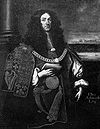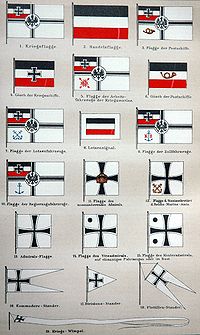Portal:Heraldry
Welcome to the Heraldry and Vexillology Portal!


Vexillology (from the Latin vexillum, a flag or banner) is the scholarly study of flags, including the creation and development of a body of knowledge about flags of all types, their forms and functions, and of scientific theories and principles based on that knowledge. Flags were originally used to assist military coordination on the battlefield, and have evolved into a general tool for signalling and identification, particularly identification of countries.
Heraldry encompasses all of the duties of a herald, including the science and art of designing, displaying, describing and recording coats of arms and badges, as well as the formal ceremonies and laws that regulate the use and inheritance of arms. The origins of heraldry lie in the medieval need to distinguish participants in battles or jousts, whose faces were hidden by steel helmets.
Selected biography

Elias Ashmole was an antiquarian, collector, politician and officer of arms. He supported the royalist side during the English Civil War, and at the restoration of Charles II he was rewarded with several lucrative offices, including Windsor Herald of Arms in Ordinary. Throughout his life he was an avid collector of curiosities and other artifacts. Many of these he acquired from the traveller, botanist, and collector John Tradescant the elder and his son of the same name, and most he donated to Oxford University to create the Ashmolean Museum. He also donated his library and priceless manuscript collection to Oxford. Apart from his collecting activities, Ashmole illustrates the passing of the pre-scientific world view in the seventeenth century: while he immersed himself in alchemical, magical and astrological studies and was consulted on astrological questions by Charles II and his court, these studies were essentially backward-looking. Although he was one of the founding members of the Royal Society, a key institution in the development of experimental science, he never participated actively. (more...)
Selected flag

The Law Regarding the National Flag and Anthem (国旗及び国歌に関する法律, Kokki Oyobi Kokka ni Kansuru Hōritsu) (abbreviated as 国旗国歌法) is a law that formally established Japan's national flag and anthem. It was promulgated on August 13, 1999, and established the Nisshōki (日章旗, Sun-circle flag) as the national flag of Japan and the song Kimigayo (君が代) as the national anthem of Japan. Details about each symbol were provided in appendixes in the law, such as construction details of the flag and sheet music for Kimigayo. The law did not provide any protocols involving both symbols or how they should be used or respected. Due to the lack of rules about the usage of both symbols, different national and prefectural agencies and ministries came up with their own regulations.
Before the passage of this law, there was no official flag or anthem that represented Japan. From 1870, the Nisshōki (日章旗) flag, also referred to as the Hinomaru (日の丸), was used in various capacities to represent Japan; Kimigayo (君が代) was used as Japan's de facto anthem since 1880. (more...)
Selected coat of arms

The coat of arms of Munich (Münchner Wappen) depicts a young monk dressed in black holding a red book. It has existed in a similar form since the 13th century, though at certain points in its history it has not depicted the central figure of the monk at all. As the German name for Munich, i.e. München, means of Monks, the monk in this case is a self-explanatory symbol who represents the city of Munich. Appearing on a document of May 28, 1239, the oldest seal of Munich has a picture of a monk wearing an open hood. While all seal impressions show the monk with the book in one hand and three outstretched fingers in the other, the monk has varied slightly, appearing in profile, then later full-faced and bare-headed. By the 19th century the figure was portrayed as youthful and became known as the Münchner Kindl or Munich Child. The coat of arms in its current form was created in 1957 and is still an important symbol of the Bavarian state capital. (more...)
Selected picture

Flags used by the German Kaiserliche Marine (Imperial Navy), 1892.
Did you know...
- ...that in the coat of arms of Schleswig-Holstein (pictured) the lions in the Schleswig arms allegedly face the right because Otto von Bismarck thought it impolite for them to turn their backs on Holstein?
- ...that Rodney Dennys left his career in the British intelligence service to become an officer of arms?
- ...that the horseman depicted on the coat of arms of Moscow was not identified with Saint George until the 18th century?
- ...that the American Palestine Line claimed that its ship the SS President Arthur was the first ocean liner to fly the Zionist flag when it began service in 1925?
- ...that in 1865, William Carpenter Bompas protected his party of ox-carts from attacks by purportedly hostile Sioux by flying the Flag of England?
Related portals
|
|
|
Heraldry Web resources
Authorities
- Belgium - The Council of Nobility, Flemish Heraldic Council and Council of Heraldry and Vexillology of the French Community
- Canada - Canadian Heraldic Authority and see also Public Register of Arms, Flags and Badges
- England, Wales, and Northern Ireland - The College of Arms
- Ireland - The Office of the Chief Herald of Ireland
- Netherlands - High Council of Nobility
- Portugal - Instituto da Nobreza Portuguesa
- Scotland - The Court of the Lord Lyon
- South Africa - South African Bureau of Heraldry
- Sweden - National Board of Heraldry, The National Archive
- United States Army - The United States Army Institute of Heraldry
Societies
- Greek Heraldry Society
- The Academy of Heraldic Science Czech republic
- The American College of Heraldry
- The American Heraldry Society
- The Augustan Society
- The Australian Heraldry Society Inc.
- Bulgarian Heraldry and Vexillology Society
- The Center for Research of Orthodox Monarchism
- Cambridge University Heraldic and Genealogical Society
- Chiltern Heraldry Group
- The College of Dracology
- Croatian Heraldic and Vexillologic Association
- The Finnish Heraldic Society
- Fryske Rie foar Heraldyk
- Hellenic Armigers Society
- Guild of Heraldic Artists
- Genealogical Society of Ireland
- Heraldry Research Institute (Japan)
- The Heraldry Society
- The Heraldry Society of Africa
- The Heraldry Society of New Zealand Inc.
- The Heraldry Society of Scotland
- The Heraldry Society of Southern Africa
- The Institute of Heraldic and Genealogical Studies
- The International Association of Amateur Heralds
- Italian Center of Vexillological Studies
- Lancashire Heraldry Group
- Macedonian Heraldry Society
- New England Historic Genealogical Society Committee on Heraldry
- Norwegian Heraldry Society
- Oxford University Heraldry Society
- Polish Heraldry Society
- Polish Nobility Confederation
- Real Academia Matritense de Heráldica y Genealogía - Royal Academy of Heraldry and Genealogy of Madrid
- Romanian Institute for Genealogy and Heraldry
- The Royal Heraldry Society of Canada
- The Russian College of HeraldryThe Russian College of Heraldry
- Serbian Heraldic Society
- Societas Heraldica Scandinavica
- Societas Heraldica Slovenica
- Swedish Heraldic Society
- Ukrainian Heraldry Society
- Royal Association Genealogical and Heraldic Office of Belgium
Vexillology
Software
- Coat of Arms Visual Designer web-based program
- Puncher Heraldry Program
- Blazonry Server - pyBlazon
- DrawShield - creates SVG shield or arms image from blazon
- CoaMaker - web-based tool
- Blazon95 and BLAZONS! 2000, older Windows applications
Texts
- Heraldry, historical and popular : with seven hundred illustrations (1863)
- A Complete Guide to Heraldry (1909)
Other
Wikimedia
The following Wikimedia Foundation sister projects provide more on this subject:
-
Commons
Free media repository -
Wikibooks
Free textbooks and manuals -
Wikidata
Free knowledge base -
Wikinews
Free-content news -
Wikiquote
Collection of quotations -
Wikisource
Free-content library -
Wikispecies
Directory of species -
Wikiversity
Free learning tools -
Wikivoyage
Free travel guide -
Wiktionary
Dictionary and thesaurus












